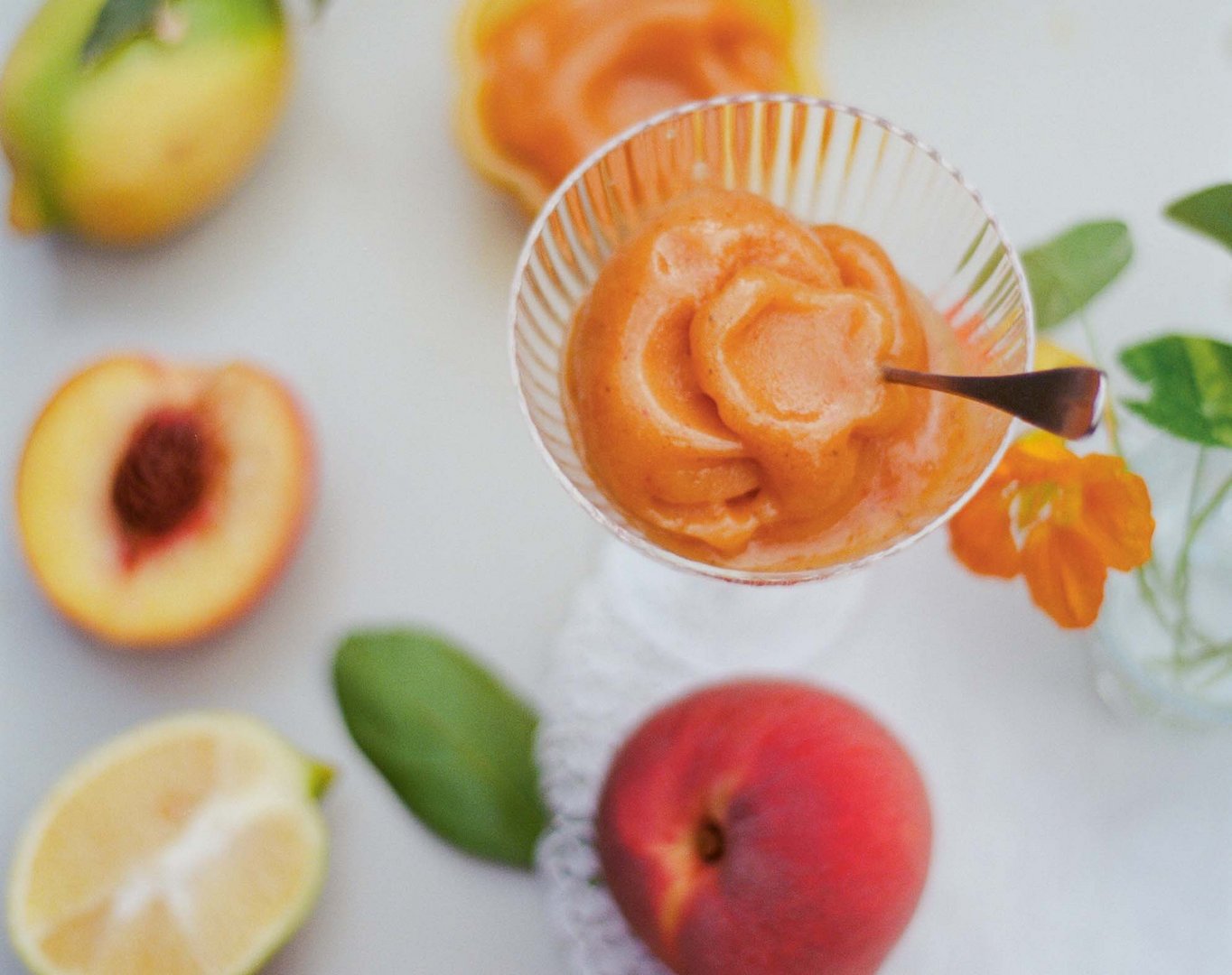Pudding aficionados put chef and food writer Letitia Clark’s new cookbook, La Vita è Dolce, through its culinary paces
Ella Walker tried: Caramelised apricot, almond and orange blossom upside-down cake
I shall admit upfront, I had a bit of a mare with this one. It began with ordering a new and unfamiliar pan (Clark specifies using one that is 23cm/9in and all of mine were too small), forgetting to grease said pan properly, and then absolutely not getting the hang of caramel.
However, I will say that this higgledy-piggledy, very upside down upside-down cake was a triumph in taste.
It all began so well. The sponge is a doddle. Spiked with orange blossom water, the batter is laced with almonds and yoghurt, making it super light and, once all the fruit has soaked into it, suitably sweet, sodden and syrupy. The problems kicked in when I realised the recommended seven to eight apricots would not nearly be enough for the topping (I added in the segments of a satsuma that was on its last legs), followed by two attempts at making caramel.
It was on its re-emergence that I flipped it and the whole middle of the cake leapt into a jumble… There was no rescuing the look of it, but it was ridiculously good eaten straight from the tin, or later for breakfast with a dollop of yoghurt. Next time, I solemnly swear to grease the pan.

Serves 8–10
For the apricots
15g butter, plus extra for greasing
7–8 apricots
140g sugar
60ml water
1tbsp lemon juice
For the cake
175g butter, softened, plus extra to grease
175g caster sugar
A pinch of sea salt
Zest of 1 lemon
3 eggs
100g plain flour
100g ground almonds)
100ml yoghurt, plus extra to serve
2tsp baking powder
1tbsp orange blossom water
Grease a 23cm cake tin with butter and line with baking parchment. Preheat the oven to 180C (350F/Gas 4).
Halve the apricots and remove the stones. Set aside.
Put the sugar and water in a saucepan and heat gently, swirling the pan rather than stirring to dissolve the sugar. Watch carefully until the mixture turns a light coffee colour, swirling occasionally to make sure the caramelisation is even. When the mixture is caramel coloured, remove from the heat.
Add the butter and turn the heat down to low, stirring until it all comes together. Add the lemon juice and stir well. You should now have a smooth caramel.
Pour the liquid caramel into the lined cake tin and smooth it out to form an even layer. Add the apricots, placing them close to each other, cut-side down.
For the cake, cream the butter and sugar with the salt and lemon zest until pale and fluffy. Beat in the eggs, one by one, until incorporated. Add the flour and the ground almonds and mix again. Finally add the yoghurt, baking powder and the orange blossom water. Stir to form a smooth batter, then ladle into the prepared tin.
Smooth the top, then bake in the oven for 45–50 minutes, until golden and risen. Allow to cool for a few minutes before inverting onto a serving plate. Serve with yoghurt or a blob of mascarpone.
Prudence Wade tried: Peach and basil sorbet
Few things are more refreshing than a cool sorbet on a sticky, hot summer’s day.
While you can’t go wrong with classic lemon sorbet, peach transports you to Tuscany, and the hint of basil is a delightful background note. The recipe itself is simple – all you have to do is make a sugar syrup, add the basil, and pour it over some macerated peaches. Once that’s infused for a few hours, you sieve the mixture and pour it into an ice-cream machine.
In just 15 minutes, I had sorbet that tasted fully professional – sweet and absolutely satisfying. It’s easy if you have an ice-cream machine, and even though Clark gives directions for how to make it without the expensive kit, that really would be more of a faff.
Peach and Basil Sorbet
Makes 1 litre
200g (plus 2tbsp) sugar
100ml water
20 leaves of fresh basil, washed, patted dry and torn
750g very ripe peaches
Zest and juice of 2 lemons
Bring the sugar and water to the boil in a small saucepan. Allow to simmer for one minute (swirl the pan to make sure the sugar has melted but do not stir). Once you have a clear, shiny, thick syrup, remove from the heat. Drop in the basil leaves, then decant the syrup into a glass jug or bowl to cool. Cover.
Cut the peaches into chunks and macerate them with the lemon zest and the lemon juice. (I just peel this in strips with a swivel peeler here as everything will be blitzed and strained eventually but you can finely zest it if you prefer.)
When the syrup has cooled, pour it over the peaches and leave the whole lot to infuse for a few hours at room temperature (or covered in the fridge overnight).
Blend everything (leaves, zest and peach flesh) in a blender until you have a smooth purée.
Sieve the mixture, discarding the bits of basil left behind in the sieve, making sure to press the pulp to extract all the flavours and juices.
Transfer to an ice-cream machine and churn according to the manufacturer’s instructions. Store in an airtight container.
La Vita è Dolce by Letitia Clark is available now







Click here to change your cookie preferences